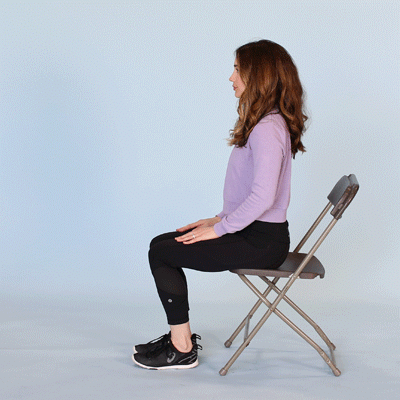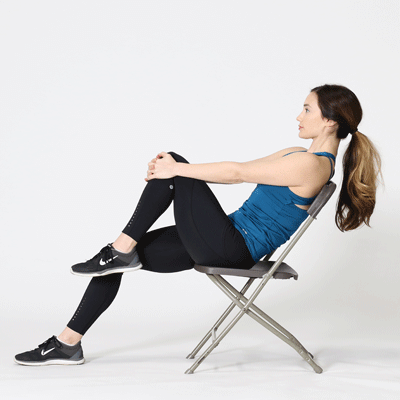You may be able to pop your knee by sitting on a chair and performing specific exercises. If you frequently need to pop your knee, speak with a healthcare professional.
Cracking, popping, or crunching noises that come from your knee during certain movements are known as crepitus.
Crepitus in your knee is often harmless and relatively common. In fact, some research estimates that
However, frequent noises may indicate wear and tear associated with aging or a health condition that is present or developing.
If you sometimes feel a strange sensation in your knee joint — as if it’s inflated with air or locked into place — it may be accompanied by a strong desire to “pop” the knee. This helps alleviate tension that is built up in the joint.
This can be done safely if you move slowly, carefully, and with intention.
The knee joint connects the upper and lower parts of your leg. It’s composed of several components like bones, cartilage, and ligaments that help it straighten, bend, and hold weight.
Knee crepitus can occur if any of these components get affected.
Here are two methods you can try to pop your knee. It’s important to stop immediately if you experience any pain.
1. Active knee extension

- Sit down on a chair.
- Extend your leg straight in front of you and point your toe upward.
- Pause at the top and return to the starting point.
- Repeat until you hear a pop or you’ve performed 15 repetitions.
2. Seated knee pull

- Sit down on a chair, with your buttocks close to the edge.
- Wrap your hands around the affected knee, just below the kneecap.
- Pull your leg in toward you, aiming to touch your chest with your knee. Hold the stretch at the top for 3 seconds. This should create tension in the knee and a “pop,” or release.
- Lower your leg back down. Repeat until you hear a pop or you’ve performed 15 repetitions.
If you feel like you need a bit more tension to get a “pop,” try wedging a hand towel behind the affected knee.
It’s important to stop immediately if this stretch causes increased pain.
Researchers characterize the sounds of knee noises into two types:
- Pathological: These are knee pops and sounds that only you can feel or hear. These usually have a clear cause, such as inflammation, injury, or surgery.
- Physiological: These knee pops are loud enough that everyone can hear. There’s usually no clear cause, but frequent knee cracking that’s physiological is a sign you may need to see a doctor to determine the underlying issue with your knee joint.
Your joints are coated in a lubricant called synovial fluid. This fluid contains oxygen and nitrogen, among other elements. Occasionally, the gases from this lubricant can build up into tiny bubbles and need to be released, causing a “crack” in your knees.
That said, the causes of crepitus aren’t always straightforward. Researchers are still working to learn more about what causes these popping and cracking sounds in our joints.
Other causes of knee cracking include broken bones that don’t heal correctly and tendons that catch on the ridges of your bones and muscles as you move.
As you age, the cartilage in your knees can become worn. This deterioration of your knee joint can cause it to feel “creaky” as bone rubs on bone when you move your knees.
Sometimes, pain in your knee joint can also indicate a knee injury or other developing health conditions. According to the American Academy of Orthopaedic Surgeons, some causes of knee noise include:
- knee osteoarthritis
- ACL injury
- torn or strained meniscus
- iliotibial (IT) band syndrome
- plica syndrome
- patellar (knee cap) fracture
- having had knee replacement surgery
If you get an injury and feel or hear a loud “pop,” you may have experienced a bone fracture, tendon injury, or ligament tear – especially if it’s accompanied by intense pain.
It’s important to get immediate medical attention if this occurs.
Make a doctor’s appointment for your knee if you notice:
- skin discoloration, swelling, or stiffness around your kneecap
- tenderness or pain when you touch your knee
- inability to bend your knee
- consistent pain with walking or jogging
Cracking your knee is safe if pain or injury doesn’t accompany the sound.
Getting regular physical activity and doing joint-loosening activities like Pilates, yoga, and water-based exercises could help make your joints more flexible.
If you experience frequent pain or the urge to pop your knee, speak with a healthcare professional. This may be a symptom of an underlying health condition that could require medical attention.




